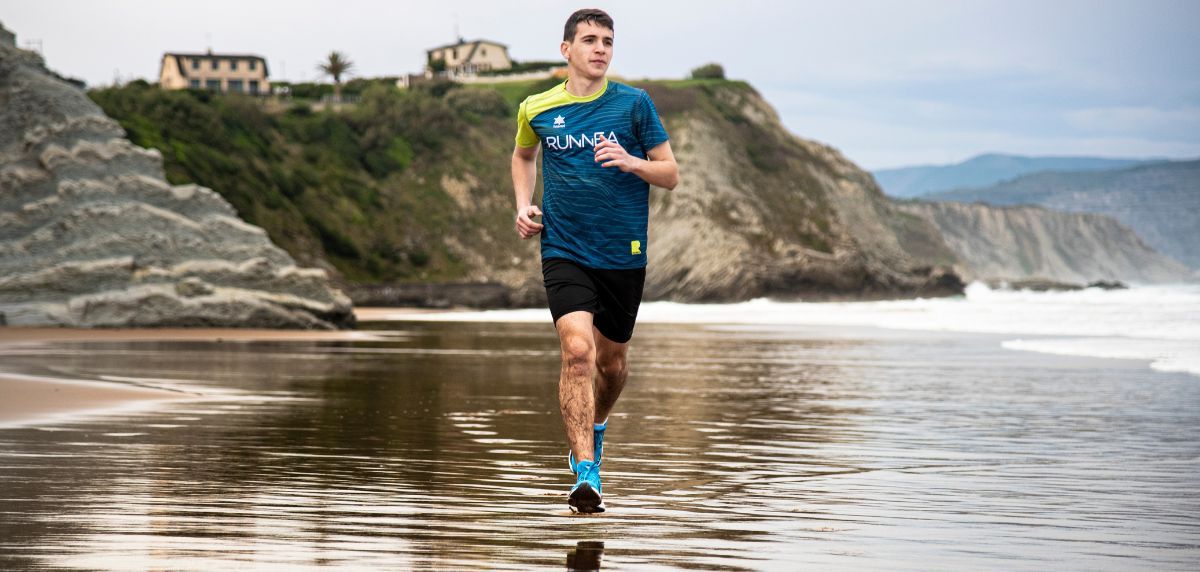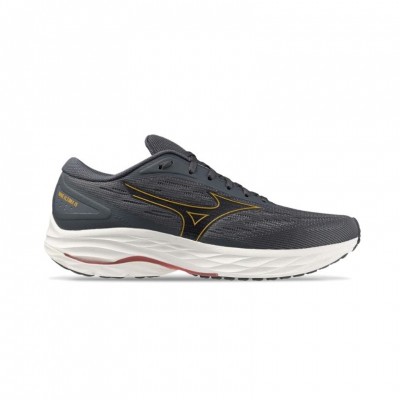Many of us runners continue to run in summer and sometimes we are forced to do so at times when the temperature is very high, the excuses we make are that "some races are held at those hours" or that "we have no choice but to take advantage of the half days to run...".
We are also among those who take advantage of the vacations to put on our Running shoes and continue practicing our hobby, and some of us even try to participate in races in other countries, even in other continents, trying to combine sport, vacations and, in many cases, trying to reconcile our participation with family tourism.
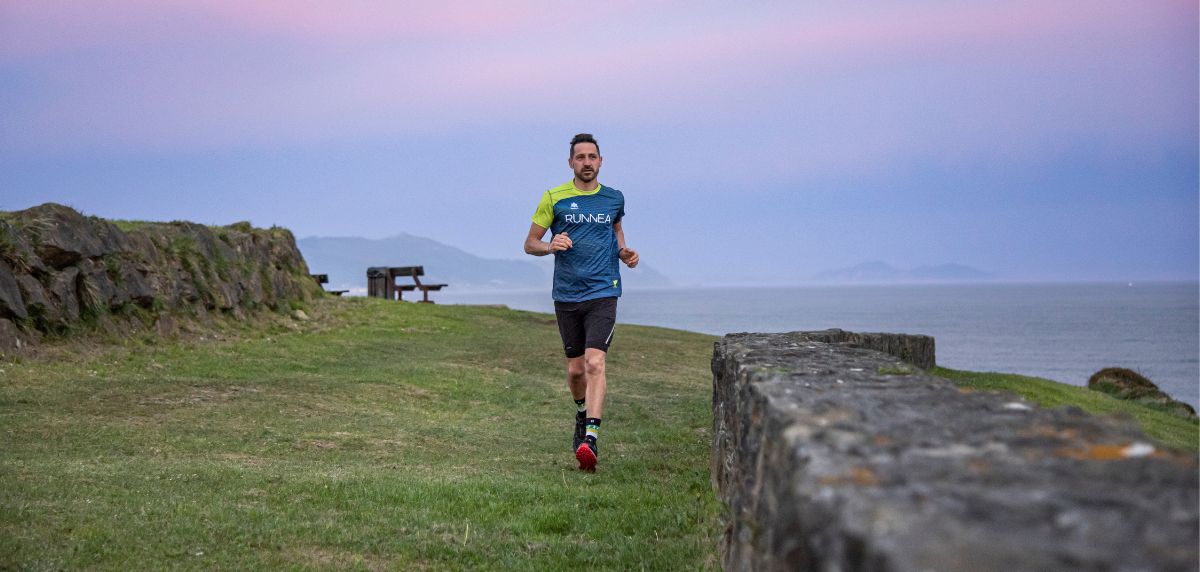
Sometimes they are special races; marathons, half marathons or charismatic races because of the country where they are held, its geography, organization, prestige ..., but often they are characterized by a very different climate to the one we have in our territory.
If running competitions in the middle of summer is already a challenge for the participants, running in more adverse weather conditions than we are used to is, as we will see in this article, a special challenge for our body.
We will try to give you a summary of research and scientific studies on the guidelines for action and recommendations regarding acclimatization and hydration in adverse weather conditions, in order to make the most of the advantages they offer us to improve our performance or, at least, not to put it in a serious compromise.
- You may be interested in: Calendar of popular races
The health risks of running in extreme conditions
The training experts at RUNNEA believe it is appropriate to highlight the health risks of running in extreme conditions, especially if there is no proper acclimatization, which is a well-objectified cause of decreased physical performance.
Scientific evidence shows that regular physical exercise brings multiple health benefits, butstrenuous efforts in hot and humid conditions represent a great challenge to the body's ability to do so with guarantees.
We know that the human body tries to maintain a constant body temperature of around 37º, so when our body temperature rises with physical activity, different physiological responses are triggered. The body's thermal regulation center is located in the hypothalamus, modulating the production of hormones that regulate the activity of the sweat glands, increased vasodilation, sweating and increased heart rate, among other effects.
Among the most effective actions is to carry out a correct hydration that, depending on the duration and conditions in which the effort is made, will be decisive.
- You may be interested in: Hydration during and after running...when water alone is not enough!
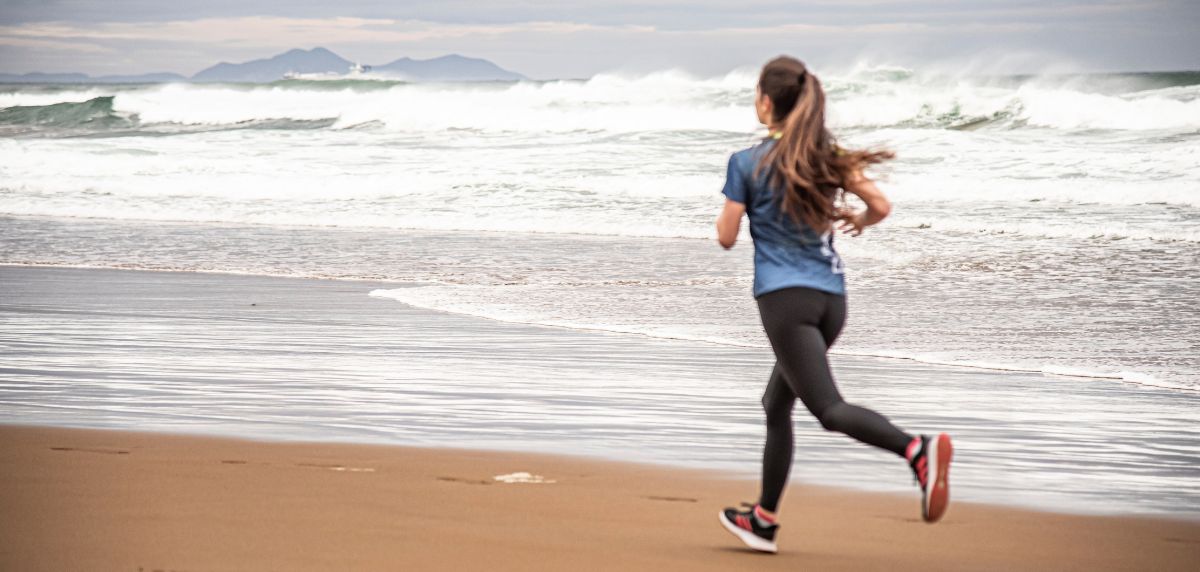
Body temperature regulation
Blood has a very important function in the regulation of body temperature, since it transports excess heat from the inside of the body to the skin for elimination. Of the cooling mechanisms, the most important is perspiration, since much of the heat generated by physical activity is lost through sweating.
Tip: we should not dry our sweat when we are hot, but let it evaporate.
It is when the water evaporates from the sweat passing from the liquid to the gaseous state, when the cooling of the body surface on which the exchange takes place occurs, so we should not dry our sweat when we are hot, but let it evaporate. We must take into account the importance of sweat when training and competing in summer, since it is the best temperature regulator, and if it increases in excess it can be a serious problem for our health.
The higher the humidity, the greater the need for hydration.
In this mechanism the environmental humidity is a determining factor, since being high it prevents the evaporation of sweat and therefore the decrease in body temperature, so we must hydrate more in the efforts that are made in conditions of high humidity.
Another mechanism by which the body loses heat is convection, and is produced by the effect of the wind, which in addition to increasing the evaporation of sweat takes off the layer of hot air near the skin cooling it.
If you have the chance, get wet
In addition to perspiration, there is the mechanism of conduction, the loss of heat by conduction when wet is extremely important due to the fact that the capacity of water to eliminate heat is 20 times greater than that of air.
To dissipate the heat generated during intense muscular work, the body responds by dilating the superficial blood vessels of the skin, a response known as "vasodilatation", thus increasing conductivity, heat loss by evaporation of sweat and conduction and facilitating the effect of convection.
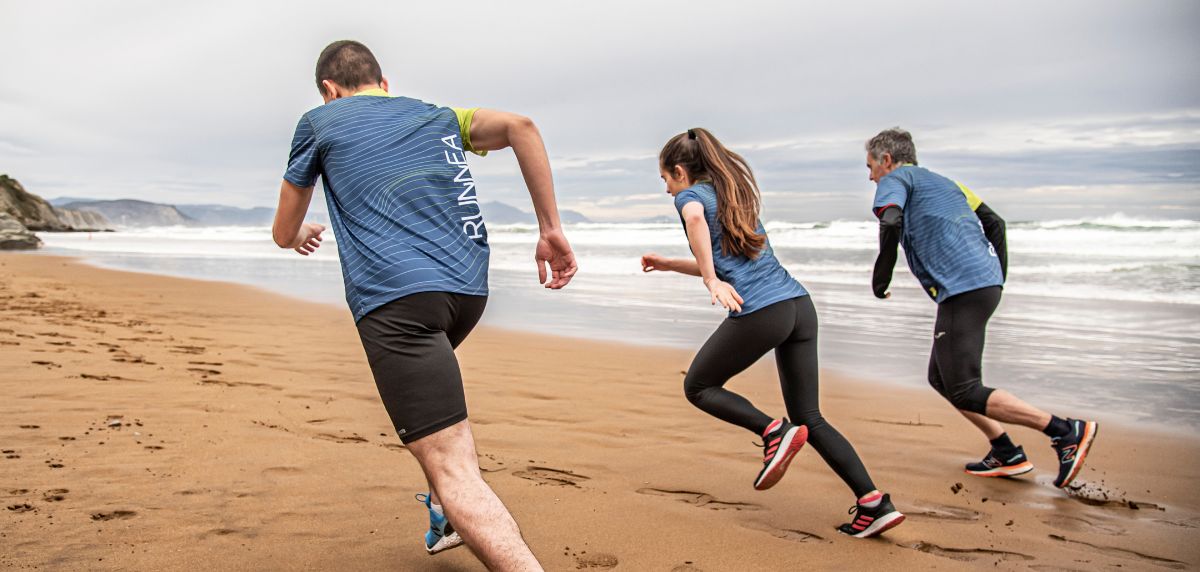
Factors that alter body temperature
There are certain factors that alter body temperature such as:
- The level of hydration
- Environmental conditions (temperature, humidity, absence of wind, solar radiation...).
- The action of certain drugs and substances such as alcohol, caffeine or diuretic foods.
- Suffering from an infectious process.
These situations, and even more so when they are combined, can trigger the so-called heat-related pathologies in which children, adolescents and the elderly are more vulnerable. But they can also be suffered by runners who are not acclimatized.
If the body is unable to lower the body temperature by not following the recommendations of hydration and cooling, or by training at a higher intensity than it should, our performance is more than impaired and can seriously affect our health.
. You may be interested in: Running on the beach with or without Running shoes, which is better?
Main heat-related pathologies
Heat stroke
It is characterized by a high body temperature above 40º, tachycardia, hypotension, sweating may disappear (anhidrosis) and the nervous system is altered and the head hurts, there is confusion, even loss of consciousness.
What to do in case of heat stroke
How to act: Do not keep running, stop immediately and rest lying down in a cool and ventilated place with your legs up and your head slightly elevated, cool your body with cold water and hydrate yourself. This is the most serious condition that can become seriously complicated and requires immediate medical supervision (call 112).
Heat stroke
High temperature but below 40°, headache, malaise and confusion.
What to do in case of heat stroke
What to do : Do not keep running, stop exercising immediately, hydrate, rest in the shade and start cooling down as soon as possible to avoid major problems. If the discomfort does not subside, go to the emergency room for evaluation.
Heat syncope or fainting
Due to sustained exposure to heat, the blood is distributed unfavorably to the lower extremities and this causes insufficient oxygen to the brain and loss of consciousness. This type of heat collapse is a safety mechanism of the body.
What to do in case of syncope
How to act: Lie down in the shade and in a ventilated place, elevate the legs and cool the body; hydrate abundantly when consciousness is regained.
Heat exhaustion
It is thetypical feeling of "being melted", body temperature between 38º and 40º with reduced or no perspiration, extreme tiredness, hypotension, tachypnea (elevated respiration), tachycardia, oliguria (decrease in urine production).
What to do in case of heat exhaustion
How to act: Stop running immediately, rest in a cool and ventilated place, wet your skin with cold water, especially your head, and hydrate yourself.
Cramps
Muscle pain or any alteration in the processes of muscle contraction and relaxation are related to the loss of water and electrolytes (magnesium, sodium, potassium ....) accompanied by muscular and nervous fatigue.
How to deal with cramps
How to act: rest, hydrate, replenish mineral salts if there are signs of deficiency, muscle stretching.
Mild hyperthermia
Body temperature slightly elevated because the body does not find an adequate response to normalize it. Who has not suffered from hyperthermia when training in the heat during the first days of summer? The stress suffered by the organism is perceived by having difficulties to dissipate the heat and even impossibility to sleep at night.
What can we do to avoid these pathologies and to be able to continue running in very hot conditions?
According to a recent study by the Human Performance Laboratory (Department of Kinesiology) at the University of Connecticut, the most important thing is prevention. That is, exercise at an intensity and volume according to one's fitness level and moderate exercise in "harsh" or particularly stifling environments. Simply pay attention to how your body feels and if you notice that you feel unwell, stop immediately.
5 tips for running in the heat
1. Acclimatize
Carry out a progressive period of adaptation of the organism to the heat and to the conditions in which the race you are preparing for will take place.
Between 7 and 10 days is the protocol recommended by most research to achieve acclimatization, in which you must gradually adapt to the atmospheric conditions by reducing the intensity and total duration of training sessions. Limit intense exercise to hours of lower thermal and environmental stress and introduce more and longer breaks.
Monitoring cardiovascular response by daily monitoring with heart rate monitors can help, in addition to monitoring body temperature by infrared ear measurement. Chamberlain and Terndrup (1994) consider that measurement at the level of the eardrum is more useful because it reflects very well that of the hypothalamus due to its proximity.
2. Hydrate
Hydrate yourself correctly since the body water content in an adult is approximately 60% of the body weight, distributed in the inter and extracellular space, tissues, organs and blood plasma.
During running and depending on environmental conditions, water loss can be up to 4 liters per hour.
If liquids are not replenished or their absorption is inefficient, the exchange between the different compartments is altered, which reduces the plasma volume, affecting the capacity to consume oxygen and therefore a lower sports performance.
By assessing our diuresis (urine secretion), both in terms of quantity and color, we can control our hydration. It is necessary to drink enough liquid to urinate a clear color and abundantly.
If the amount is scarce and the color of the urine is dark, it indicates that it is concentrated and has little water and many waste products. This occurs when the kidneys and the body are working hard to keep the blood plasma stable. The use of the color scale should give a result that corresponds to the scale 1, 2 and 3 which is considered to be correct hydration (see urine color chart, Armstrong 200). The consumption of vitamin and protein supplements affects the color of the urine and this should be taken into account.
To improve hydration it is preferable that the water is cool, between 15 and 20 º, having to accustom the stomach to drink the amount you are going to do in competition, (usually large sips and abruptly), so it is useless to drink little and often if then running or in competition you do the opposite.
Given the latest scientific claims that question that drinking "isotonic" sports drinks improve performance (see curiosities), it has been shown that for long duration activities carried out in extreme conditions they are very important. For medium and long distances, above all,it is necessary that fluid intake includes sodium, potassium, chlorine and simple and complex carbohydrates.
It is also known that sodium, in addition to improving the taste of the drink, stimulates the absorption of glucose in the stomach and allows better absorption of water.
3. Rest well
The days before and especially the day before the competition do not expose yourself to the sun, rest in the shade, refrigerated, hydrated and in a place with extra ventilation. Do not overeat especially at night and try to eat fruits, salads and vegetables.
During pre-competitive training, avoid excessive dehydrated foods such as bars and nuts and try to provide energy through fruits with plenty of water, gels plus liquids and drinks with complex carbohydrates to ensure the energy required for long duration efforts.
4. Refresh yourself
It is advisable to wet the skin and especially the headduring training and competitions, cooling it periodically to lower its temperature and protect it with a cap that is well ventilated.
Pour water over your head regularly and soak your cap!
Studies have shown that wearing an iced cap improves performance, so we recommend that you do a test. Put your wet cap in the freezer and see if there is also a performance improvement in your case.
Take a long bath in cold water after a strenuous workout. Pre-cooling the body with "cool jackets" or vests containing ice has been shown to improve power output by up to 7 during exercise lasting less than an hour. Although other cooling methods exist, it has yet to be determined which forms are most practical and effective for longer durations.
5. Dress appropriately:
Use technical garments that are especially breathable, that do not absorb sweat , that protect from the sun's rays and that are highly ventilated such as "honeycomb" structures. There are fabrics that are able to evacuate sweat more quickly, such as Polartec Power Dry, which expands moisture through the fabric outwards, being 30% more effective than the popular Coolmax.
In the specialized running market we have many technical fabrics with spectacular textile technology, such as the inclusion of channels that transport excess sweat from those areas of maximum sweating or with aluminum particles that increase cooling.
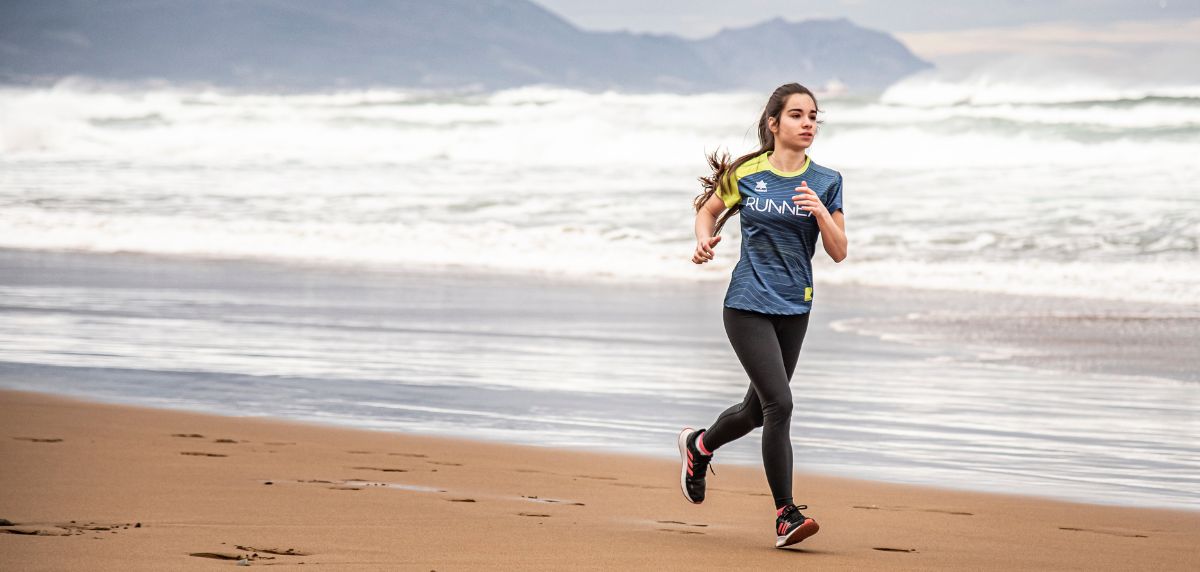
On hydration
During endurance exercise, water is lost from the bloodstream and from intra- and extracellular tissues. Unfortunately,water loss leading to dehydration quickly causes alterations in thermoregulation and thus reduced performance. Various studies corroborate that there is a decrease in endurance, muscular coordination and thermoregulation with losses of 2 of body weight.
In different circumstances it has been proven that good hydration improves resistance to fatigue and less muscle glycogen is used.
But... how should the fluid lost through sweat be replaced?
It is known that sweat is hypotonic in relation to plasma and that we lose more water than salts, which causes a concentration of blood plasma. Blood osmolarity is the measure to express the total concentration measured in osmoles / liter of substance in a solution, being in body fluids 300 milliosmoles per liter of solution.
There are numerous studies with ambiguous and contradictory results regarding the need to ingest more sodium in the diet during training and competition, but we believe that in very hot and especially humid environments an "extra salt" will come in handy.
A study with cyclists by Leutkemeier found that the increase in plasma volume era proportional to the increase in sodium intake. However, Armstrong, a reference in research on acclimatization, concludes that when the athlete has enough fluids to maintain his weight during the period of acclimatization to heat, the plasma volume is similar with diets of 4 gr. of sodium per day (ingested with a normal diet) than with double the amount. With these data he concludes that the amount of sodium ingested in a normal diet is sufficient to replace the sodium lost through sweat and to allow correct hydration and acclimatization.
Interestingly, the ACSM (American College of Sports Medicine) recommends salty foods or drinks with sodium before competition to help retain fluids in the body.
Likewise, Gisolfi and Duchman state that there are few reasons other than taste to provide sodium in beverages for athletes in events lasting less than 3 hours. For many other authors it would be sufficient to add a little more salt than usual to meals.
Potassium ion losses are much lower than those associated with the hyperkalemia observed in intense physical effort, which means that its replacement is not as necessary as that of sodium, at least during the effort. However, it is advisable to include it in recovery drinks because it favors water retention in the intracellular space, thus helping to achieve adequate rehydration.
We would like to make a note regarding glycerol because although it has been shown to be effective in increasing plasma and is considered a hyperhydrating agent that can be useful in long duration efforts, you should be very careful and be well informed about its use because it is included in the WADA list of doping substances (see thermodictionary).
Hydrating with water alone?
Many researchers corroborate that for short races of less than one hour duration 5 and 10,12k..., the most advisable is to hydrate only with water and alternate water with electrolyte drinks (and glucose) for longer distances especially if performed in extreme conditions, but the amount of electrolytes should be subject to variables such as the state of acclimatization of the athlete or environmental conditions of heat, humidity and wind, requiring personalized guidelines and quantities.
The runner's body, for example, when facing a half marathon or longer distances, not only requires water replenishment, but also electrolytes such as sodium, potassium, chlorine and magnesium. The adequate concentration of the drink implies an osmolarity lower (hypotonic) or equal (isotonic) to the plasma osmolarity, and in no case should it exceed 400 mOsm/kg of water.
- You may be interested in: What is an isotonic drink?
It is also necessary to replace energy in the fluid, i.e. simple and complex carbohydrates, these should be in a concentration between 4-6% . It has also been shown to be useful to contain amino acids and that the smell and taste of the drink should be pleasant (good palatability) to encourage voluntary intake by athletes, and in this area we running enthusiasts have many brands to choose from.
Athletes should be particularly careful with drinks containing certain vitamin supplements or stimulants such as caffeine, which can irritate the stomach and even lead to dehydration. Everything should be tested before the competition, and experience how our body responds to any small changes that we include.
According to the recommendations of the American College of Sports Medicine, drink slowly 250 to 500 ml (5 to 7 ml/kg) in the 4 hours before starting exercise. If the individual is unable to urinate or if the urine is dark, the intake should be increased in the last 2 hours and around 200 ml (a glass of water) immediately before the event. Then in the race, an average of 200 ml every 15-20 minutes on a regular basis.
Drinking before running or competing
Some studies suggest a "pre-hydration" days before the competition, which is also recommended by RUNNEA. The recommendation involves drinking fluids before going to sleep, upon waking up and throughout the day, but preferably with mineral salt preparations to reduce the possibility of producing hyponatremia or a drop in sodium levels, which would also cause a drop in performance (see terrmodiccionario).
Therefore, we must be careful with exceeding the daily intake of large amounts of water because its effects can be very harmful, negatively affecting muscular and cardiac contraction.
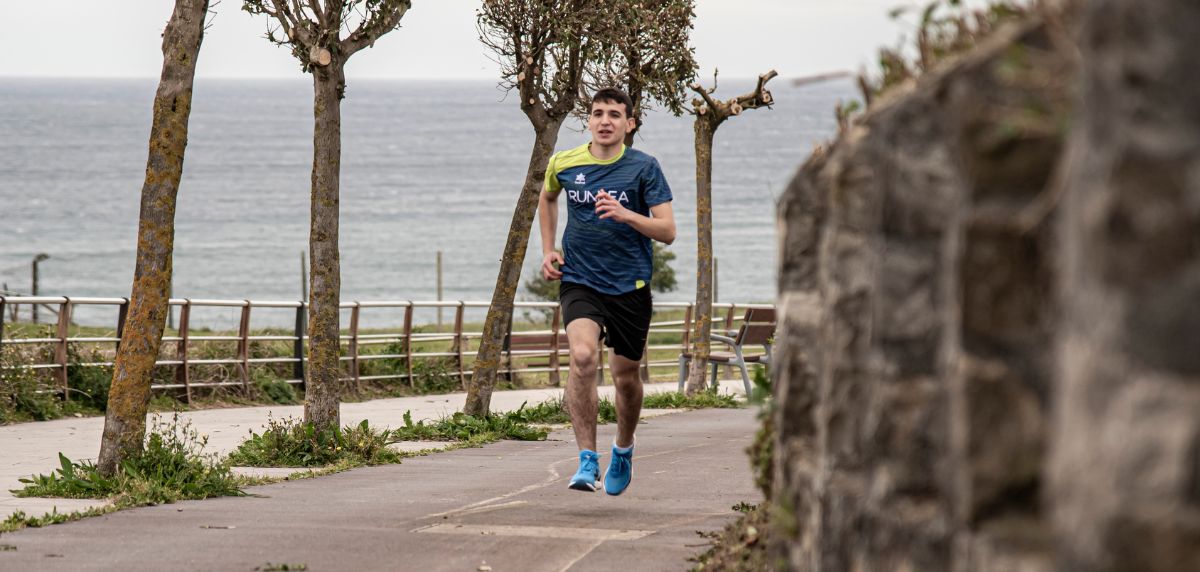
Acclimatization
This is a process of adaptation of vital importance for the athlete to protect against pathologies caused by heat given the characteristics of running in the natural environment with hot, humid environments and associated with long distances and slopes with long duration efforts.
The trained athlete:
- Adapts to heat earlier than one with less physical condition. Pandolf, et al. (1977) point out that subjects who train daily and have a high aerobic capacity (VO2max of 65 ml/kg/min) can reach stable values of heart rate and temperature in only 4 days, in contrast to subjects with VO2max of 40 and 50 ml/kg/min who required 8 and 6 days respectively. The mechanisms of adaptation of the organism to high heat training generally require between 7 and 15 days to increase the amount of sweat and to be activated earlier, with a lower intensity of effort and with a lower ionic concentration.
- The endocrine and exocrine system (external secretion) adapts by increasing the sensitivity of the sweat glands to the perspiration command. Sweating starts earlier, in a more abundant form and in a more efficient way in heat loss.
- Improved tolerance to exertion. This is confirmed by spectacular progress in the well-being of the runner, feeling better, performing better and sleeping better.
- Improves circulatory potential by increasing plasma volume by about 10%, more sodium and water is retained.
- Heart rate decreases, reducing oxygen consumption and blood pressure (Gisolfi and Cohen, 1979).
- Thesaline content of sweat is reduced, achieving a better maintenance of water balance.
- The hydration capacity is improved by optimizing the intake, absorption and gastric emptying of liquids.
The degree of acclimatization to heat is based on the adequate control of body temperature, heart rate, better exercise economy, and an effective and efficient early onset of sweating (Armstrong 1991).
What should acclimatization look like?
To habituate the body to heat, it is important to train at an exercise intensity that induces a progressive thermal overload, i.e. at an intensity of 50% of maximal oxygen consumption for short periods of time and to progress in its tolerance (Pandolf, 1979).
The objective of the training session should be to raise body temperature and stimulate sweating, without exposing the athlete to unnecessary risks. There is evidence that acclimatization is much more effective when the duration of exercise is about 100 minutes, and there is no advantage in exposing oneself for longer periods (Lind & Bass, 1963).
Also intermittent exercise is as effective as continuous exercise and performing it at higher intensities for a shorter period of time, for example 30 min per day at 75% of Vo2 max, is as effective as 60 min at 50% of maximal oxygen consumption (Houmard et al., 1990).
It is not necessary to train every day with heat, but neither is it advisable to go more than 3 days without exposure to heat. It has been shown that exercising in heat every third day for 30 days resulted in the same degree of acclimatization as exercising every day for 10 days (Fein et al., 1975).
Human physiology researchers at the University of Oregon in 2010 examined the effect that heat acclimatization could have on athletic performance in both hot and cold environments, obtaining a result with great repercussions in the world of competitive sport. The researchers conducted stress tests on highly trained cyclists and concluded thatexposure to heat provides an increase in performance in cool conditions ( 7 improvement in 10 days), in addition to the performance benefits expected in warm environments.
Curiosities
Runners from more temperate and drier areas who are used to training and racing in mild temperatures have a significant disadvantage when a race is scheduled to take place in high temperature and humidity conditions.
Beware of running training in the early hours of the day or late in the day to avoid heat-related disturbances, as we must take into account that especially in tropical climates, the highest humidity values are reached in those two periods of the day.
A million-dollar market. The sports drinks industry is worth more than 1.6 billion dollars a year.
The effectiveness of sweat evaporation depends on temperature, humidity, air speed and solar radiation. These factors can be measured using a Wet Bulb Globe Thermometer (WBGT), which combines all these parameters in an equation.
If the ambient temperature is higher than 28º, there is a very high risk for the athlete's health; when it is between 23º and 28ºC the risk is high.
The rate of sweating according to a study of the University of Castilla la Mancha (2006 Toledo) is the most obvious index of acclimatization and recommend its control by weighing the athlete before and after exercise. It is considered that a subject is correctly hydrated if his morning fasting weight is stable and varies less than 1%. After 10 days of hot exercise the sweating capacity is close to double the initial sweating rate with a decrease in the concentration of sweat mineral salts, especially sodium and chlorine.
Athletes who are fitter and have a higher VO2max are able to tolerate heat more easily and faster than those with lower levels of aerobic fitness.
The European Food Safety Authority (EFSA) has given a thumbs up to two claims about isotonic drinks: "that they hydrate better than water" and "that they help to maintain athletes' performance in exercises requiring physical endurance". But this claim cannot be extrapolated to day-to-day hydration, especially in children or sedentary people.
Placebo effect. We know of a curious case of a group of cyclists who were given water claiming it era a sports drink. Their performance was 2 better than when they were told the truth. This makes us think that not everything is the liquid compound, but that psychological factors in hot conditions are of great importance.
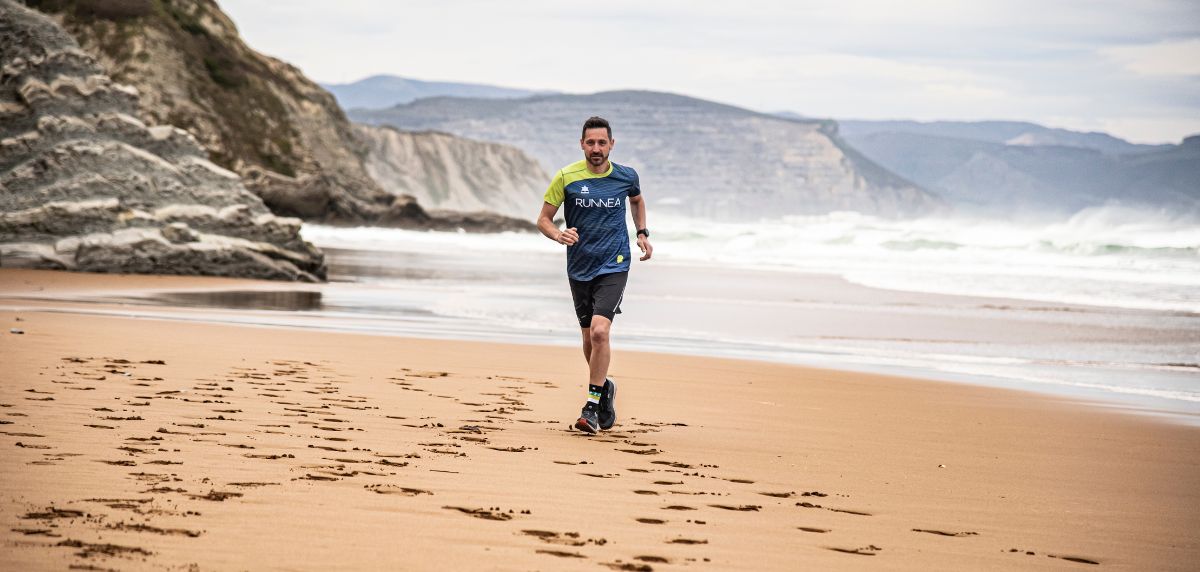
Conclusions
"The key lies not only in hydrating adequately and allowing for acclimatization, but in being cautious when performing strenuous physical exertion in adverse weather conditions."
Knowing the possible risk factors that athletes have for suffering a serious heat-related pathology is essential for prevention and/or treatment. We are convinced that disseminating strategies for prevention serves to reduce the chances of suffering episodes that seriously affect our health.
Achieving a good level of physical and psychological fitness, acclimatizing to the conditions in which the tests are going to be carried out, hydrating adequately before, during and after training and competitions are determining factors to avoid the appearance of heat illnesses. Modifying training patterns and adjusting planning to allow for gradual acclimatization are key strategies to overcome any "sporting challenge" successfully.
Thermodictionary
Euhydration
Hydric balance in our body of the water found inside and outside the cell. When there is a loss of body water it is called dehydration. An excess would be hyperhydration which can lead to hyponatremia.
Hyponatremia
A water-electrolyte disorder defined as a blood sodium concentration below 135 mmol/l. with a tendency for water to move from the interstitial space to the intracellular space. Hyperhydration or excessive hydration with water alone promotes hyponatremia by increasing the concentration of calcium in the muscle, precipitating involuntary muscle contraction andproducing, among other things, cramps, cardiac and cerebral alterations. There have been deaths due to brain damage caused by hyponatremia related to high water consumption, as in the 2002 Boston Marathon.
Sodium (Na+)
Very important electrolyte, the only one that added to beverages consumed during exercise provides physiological benefits. It stimulates maximum water and carbohydrate delivery to the small intestine for subsequent absorption and helps maintain extracellular fluid volume.
Sports drinks used during training or competition should have a sodium ion content in the range of 20 and 50 mmol/l depending on the acclimatization rate of the triathlete, the heat, intensity and duration of the effort made.
Glycerol
Glycerol, plasma expander. A substance commonly found in many food products and cosmetics. The WADA (Anti-Doping Association) indicated in an explanatory note of the 2011 "Prohibited List" that athletes can use these products without any problem because their use "will not cause an adverse result in a doping control".
To learn more
- Gorostiaga E, Centro de Estudios Investigación y Medicina del Deporte de Navarra . Olivé R. C.A.R.-Sant Cugat. Adaptations to the climate and schedule of Beijing. 2008 Edited by COE
- Armstrong LE. Heat acclimatization. Available at. http://sportsci.org
Performing in Extreme Environments (2000), Human Kinetics, Champaign. - American College of Sports Medicine. Exercise and Fluid Replacement. Special Communications. Med Sci Sports Exerc 2007;39:377-90.
- Armstrong LE. Exertional hyponatraemia. J. Sports Sci. 22(1), 144 (2004).
- Armstrong, L.E. (2000). Performing in Extreme Environments, Human Kinetics, Champaign, IL.
- Noakes T. Fluid replacement during marathon running. Clin. J. Sport Med. 135), 309 (2003).
- Gisolfi et all (1992). Intestinal water absorption from select carbohydrate solutions in humans. J appl Physiol, 735), 2142-2150.
- Wyndham. Acclimatization in a hot humid environment: cardiovascular adjustments. 1976
- Drinkwater, B., L. Thermoregulatory response of women to intermittent work in heat. 1976.
- Nadel E, Pandolf. Mechanisms of thermal acclimation exercise and heat. J Appl Physiol 1974.
Read more news about: Running Training
